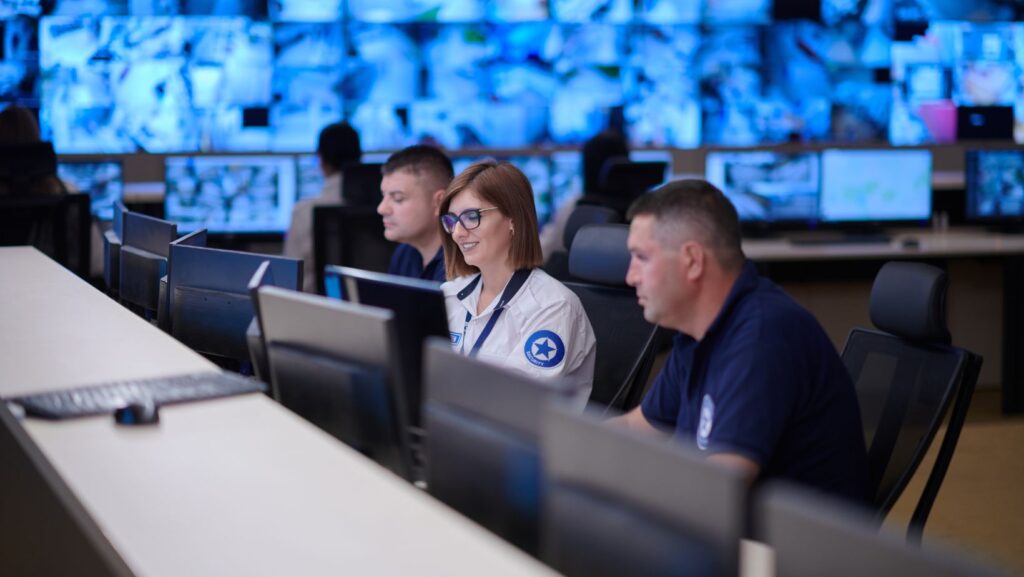The security landscape is changing rapidly.
Traditional CCTV cameras, once considered sufficient for monitoring, now fall short in a world where threats are complex and fast-moving. Governments, enterprises, and smart cities demand more than recorded footage—they need actionable insights delivered in real time.
AI-powered video analytics is now revolutionising infrastructures, enabling systems to process live streams at scale and equipping organisations with the intelligence to prevent incidents rather than simply record them.
The Evolution of Surveillance Technology
Surveillance has advanced from grainy analogue CCTV to IP cameras and cloud storage, improving visibility but remaining largely reactive. For decades, footage was analysed after an incident.
The current shift is toward predictive, AI-assisted monitoring. Real-time video analytics detects anomalies instantly, supporting immediate action. According to MarketsandMarkets, global demand is rising as organisations prioritise proactive security solutions.
Why Real-Time Analytics Matters
The biggest differentiator between recording and real-time analytics is absolutely the speed of analysis. And in security, speed can be the difference between life and death.
Loitering at critical entry points, abandoned items, unauthorised breach or intrusion can be detected the moment they happen. Even traffic violations or incidents can be detected, aiding municipal surveillance.

And beyond detection, automated systems can further reduce operational expenses and prevent room for human errors. There is a reason why the U.S. Department of Homeland Security is seeking to improve its automated video analysis capabilities and calls it a key enabler of enhanced situational awareness.
Use Cases Across Sectors
Applications for real-time video analytics are numerous and diverse:
- Public Safety: Security and crowd control at events, transportation sites.
- Enterprise Security: Surveillance at warehouses, offices and other secure locations.
- Smart Cities: Traffic management, urban crime detection.
- Healthcare & Education: Monitoring and enforcing care and learning practices.
The Role of AI and Machine Learning
At their core, these systems are running algorithms that have been trained to pick out outliers and trends. And unlike human operators, AI is capable of working at scale and does not tire.
These models can sift through hundreds of data feeds in the background and only bubble up the incidents that are relevant to humans. Products such as the SentiVeillance Cluster video analytics software used in surveillance cameras are a great example of AI at scale. Through the mass automation of workload, this AI platform is able to pinpoint threats with higher accuracy, reduce false positives, and create a safer experience with security systems.
Challenges and Ethical Considerations
Privacy implications are a major concern, particularly in the context of the GDPR and other similar regulations. Systems need to ensure they have the necessary monitoring and safety mechanisms in place.
There is also the risk of bias in the algorithms being deployed. Building trust with users requires transparency and controls to help ensure unbiased outputs from the algorithms. Innovation must be done in an ethically smart way.
Looking Ahead — The Future of Security Operations
Tomorrow’s systems will be combining real-time streaming video with thousands of sensors, drone fleets, and autonomous units. This is the only way to manage a city (or a building, or campus) of the future.
As threats become increasingly global, real-time video analytics are the future of security. Those who adopt these tools will be best suited to prevent incidents and protect their communities.
Conclusion
Real-time video analytics moves live streaming from a passive alert system to active situational awareness. It provides unprecedented speed, accuracy, and scalability in public safety, enterprise, and smart cities.
However, stewardship is critical. By addressing privacy and ethics concerns, businesses and governments can ensure that security and confidence can be strengthened by the technology now and in the future around the world.


